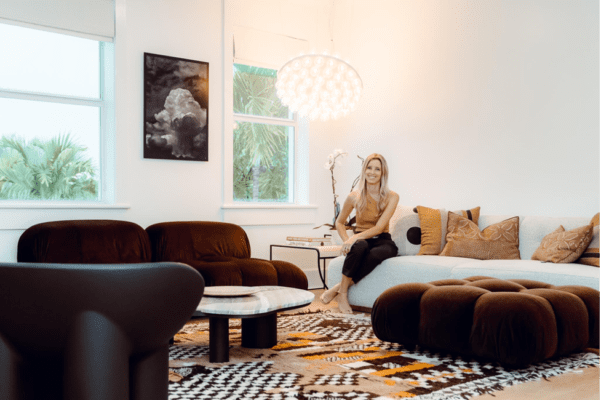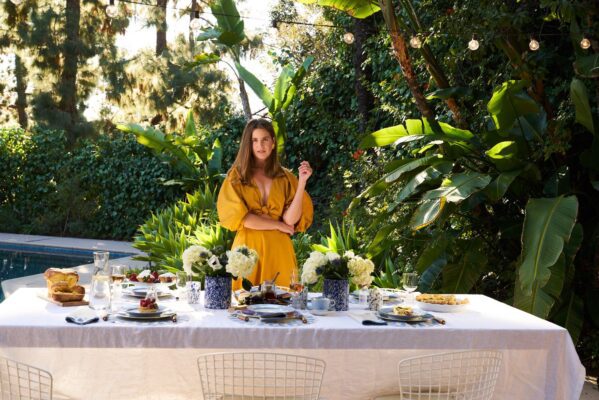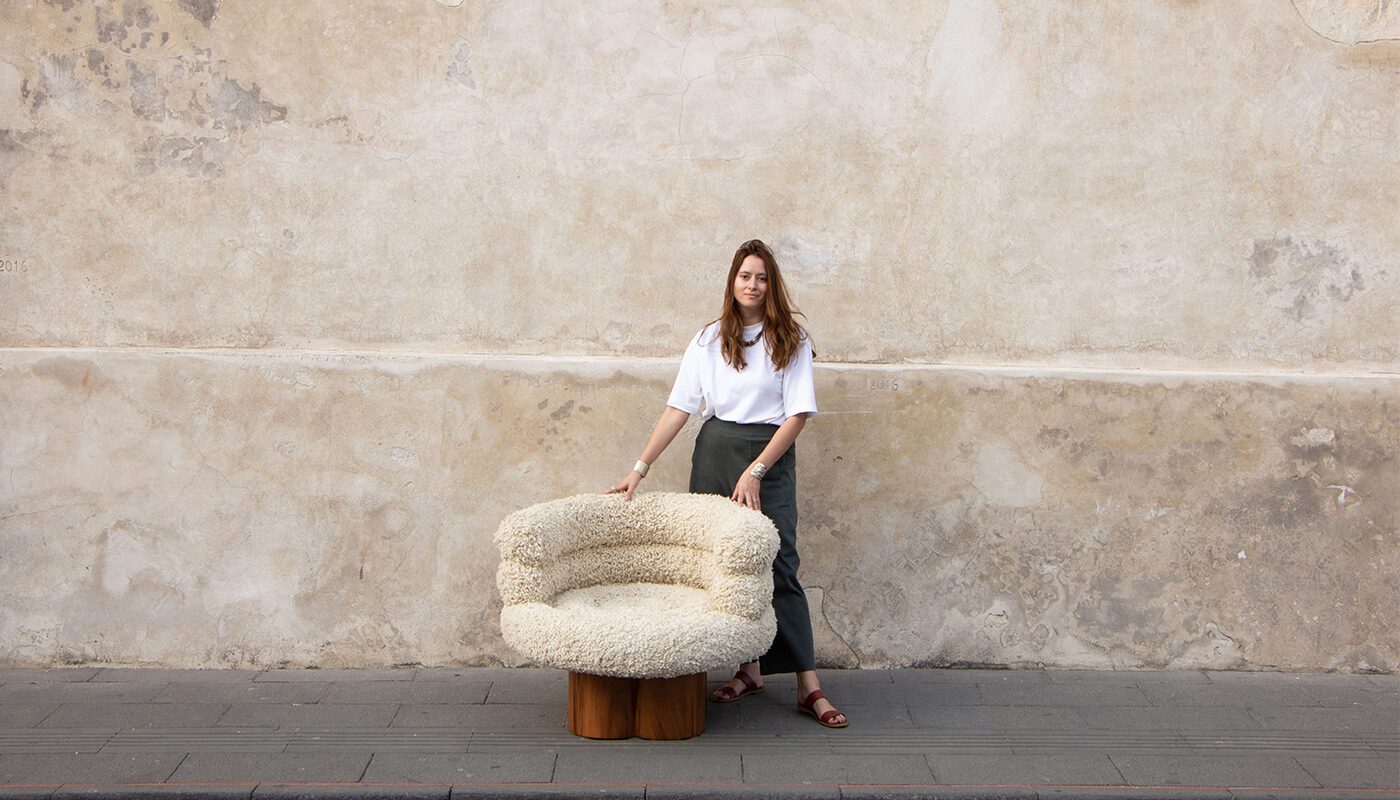
Estefania de Ros with her design, the Lana Chair.
COFFEE WITH
ESTEFANIA DE ROS: “WHAT I LIKE MOST ABOUT THE PROCESS IS THE COLLABORATION”
Name: Estefania de Ros
Profession: Interior Designer and Artist
Nationality: Guatemalan
Zodiac Sign: Leo
Instagram: @estefaniaderos
LATINNESS: Estefania, what was your introduction to the world of design?
ESTEFANIA: I always knew what I wanted to do: create. I’ve loved painting since I was little, and my mom and aunt had a textile factory where they collaborated with different local artisans. After school, I would go there. I grew up surrounded by looms, people sewing and making utilitarian products: tablecloths, clothes. Without a doubt, all of this influenced me.
Looking back now, I also remember wanting to be a photographer. It was what I really liked, but since there was no photography school in Guatemala, I studied interior design and that’s how I started.
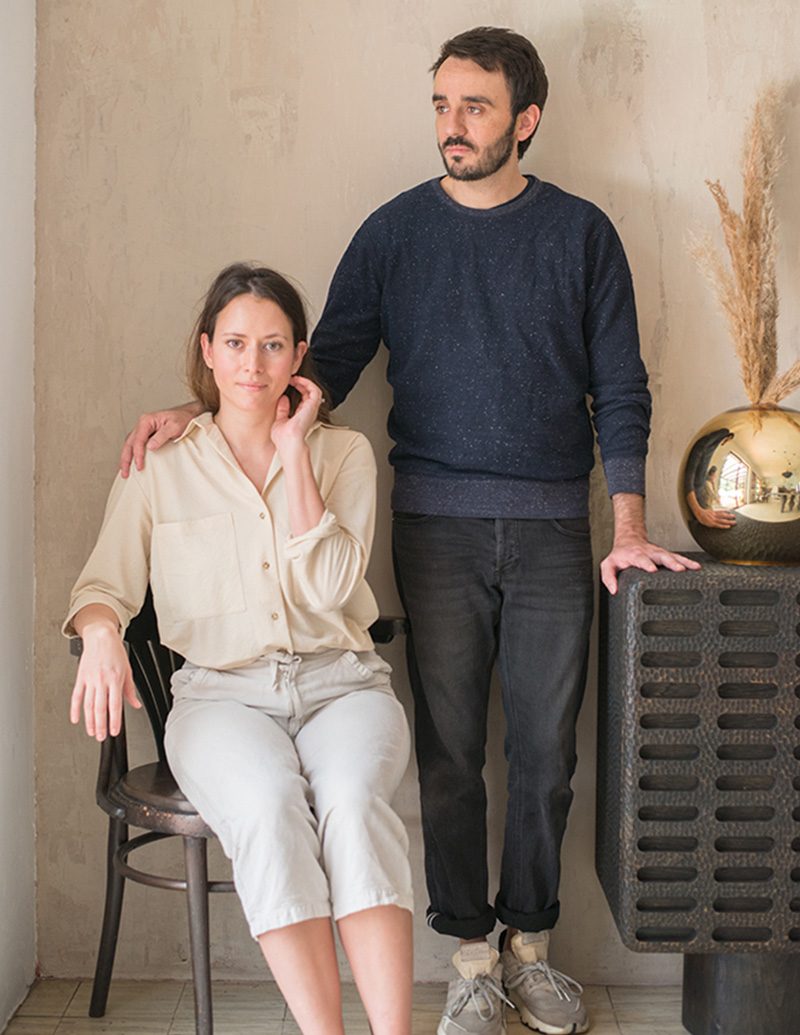
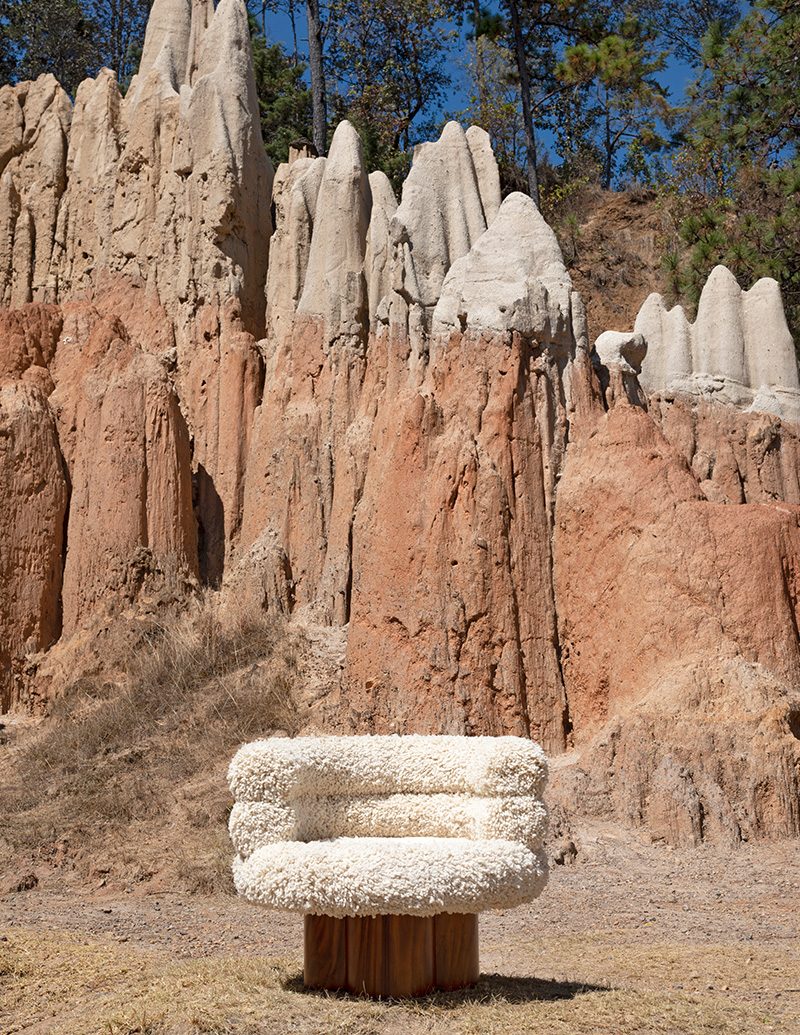
The Lana Chair, by Agnes Studio.
LATINNESS: And from there you started Agnes Studio?
ESTEFANIA: After graduation, I met Gustavo- the architect who is now my husband- and we started collaborating together, and signed up for industrial design competitions. We won a couple of them. That gave me enough confidence. so we continued. Although today I don’t do many interiors anymore, I do create furniture and all the details.
I worked in an architecture firm called Taller Ken, in Guatemala, where I learned everything, especially about working with local materials, as well as, the importance of detail. He made the plans for the furniture, and they had to be very thorough. All this helped me a lot when designing because it was a very organic process.
In 2016, Gustavo and I were invited to participate in the Simbioticas project. The idea was to work with different artisan communities in Guatemala. We traveled to the interior of the country, and that was where we met the people with whom we created our first collection.
Two years ago, I decided to pursue a Master’s degree in furniture design in Rhode Island, because that wasn’t my background. There I learned everything about its manufacture and how to work with my hands. Now I’m working with ceramics.

A selection of pieces from Livingstone, the first collection by Agnes Studio.
LATINNESS: You were recently featured in Phaidon’s Women Made, which celebrates the best women in design. Congratulations! How did you know you’d been selected? What does this mean to you?
ESTEFANIA: They emailed me and it went to spam! When I finally found out, I was super excited because Jane Hall has written several books on women’s design and architecture. She also has a fellowship with the Lina Bo Bardi Foundation. The fact that she chose my work gives me great pride, and being on a par with so many women I admire brings me so much happiness. I’m thrilled.
LATINNESS: It’s like receiving an award, isn’t it?
ESTEFANIA: Yes, and so many of the women I admire are in it, not only the current ones, but the pioneers, as well.
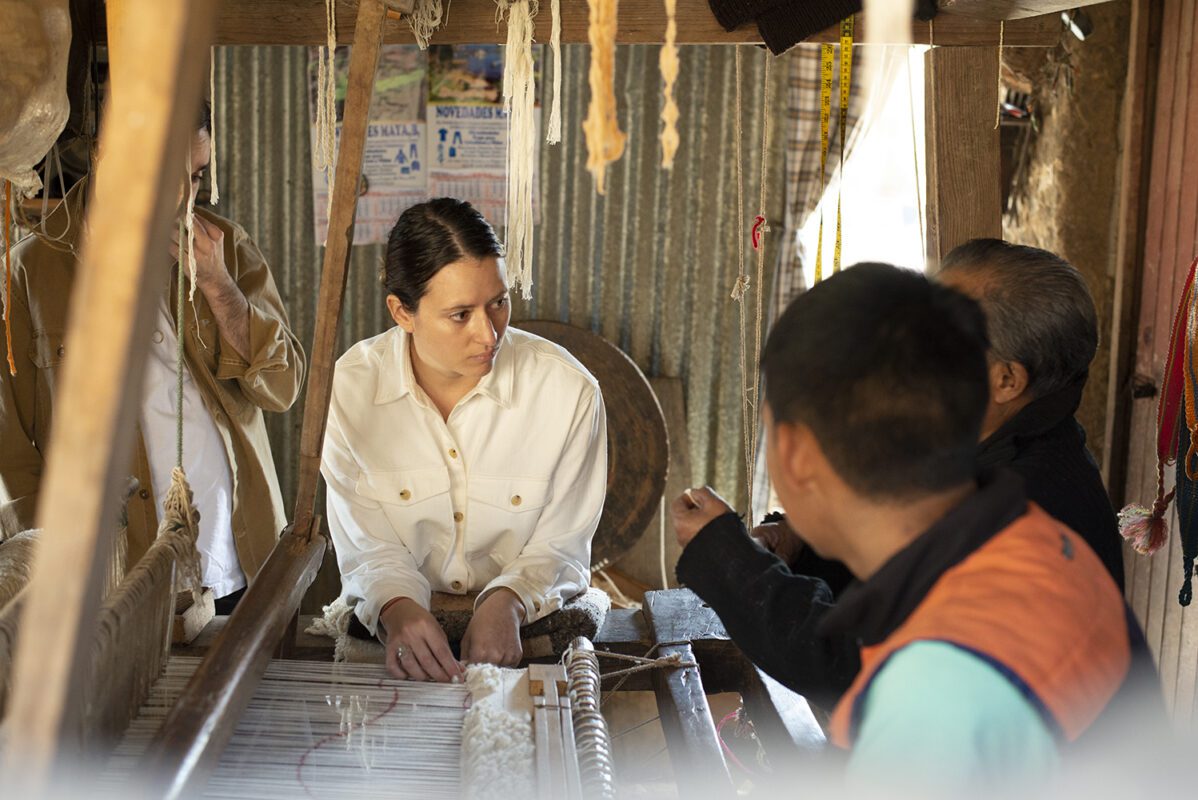
Estefania and Gustavo working together with Apolonio at his home workshop.
LATINNESS: The fact that you’re based in Guatemala is also important, the fact that you’re putting your country on the map in the world of design. How has the whole process of being based in Central America, working with Guatemalan artisans and creating that bridge with the rest of the world been like for you?
ESTEFANIA: What I like most about the process is the collaboration. Being able to go out and meet, create connections and the experience of working with artisans. I feel that many people in Guatemala don’t see what the country has to offer and the wonders that we have.
Most of the furniture here is bought or made in China, but in Guatemala, there is so much to show! Traditional techniques can be used in other ways. That’s the bridge: the local community that we’ve built.
It’s interesting to understand that we are a globalized planet, and that in Guatemala we can create something that can be shared with the world. It’s really wonderful to live in these times when this is possible, because I imagine before it was much more difficult.
We’ve been working with the people we met on that trip to the interior of the country since 2016, and now we’re making the second collection in which we try to maintain the same concept of connecting different people.
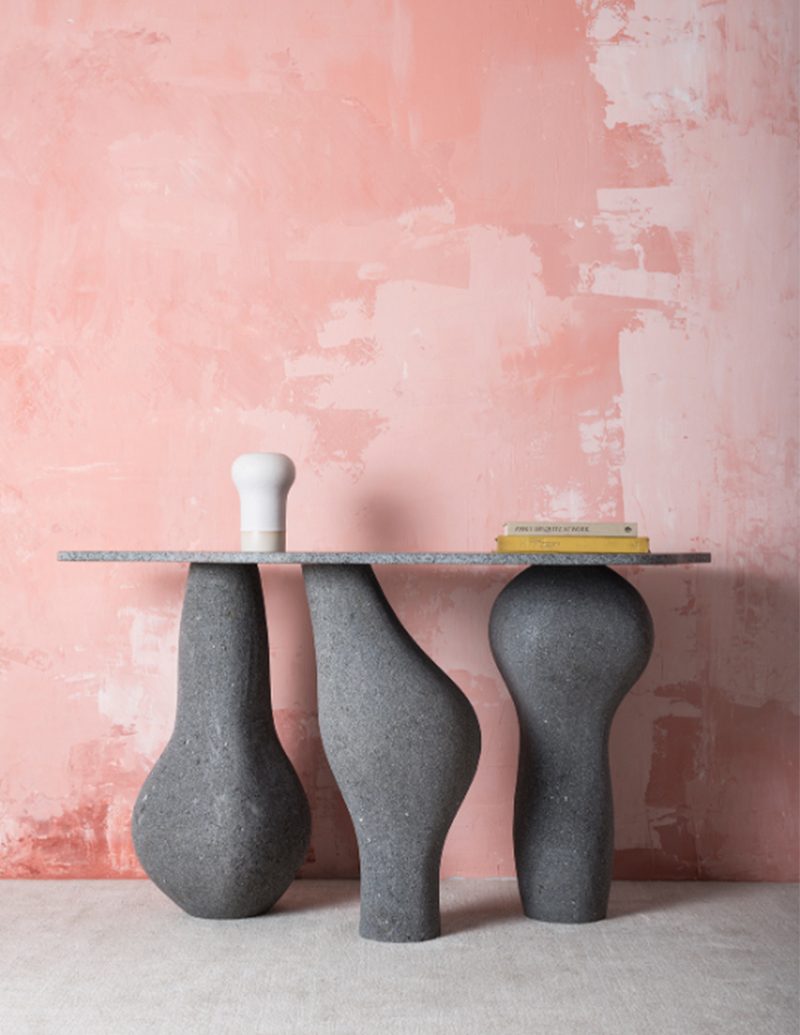
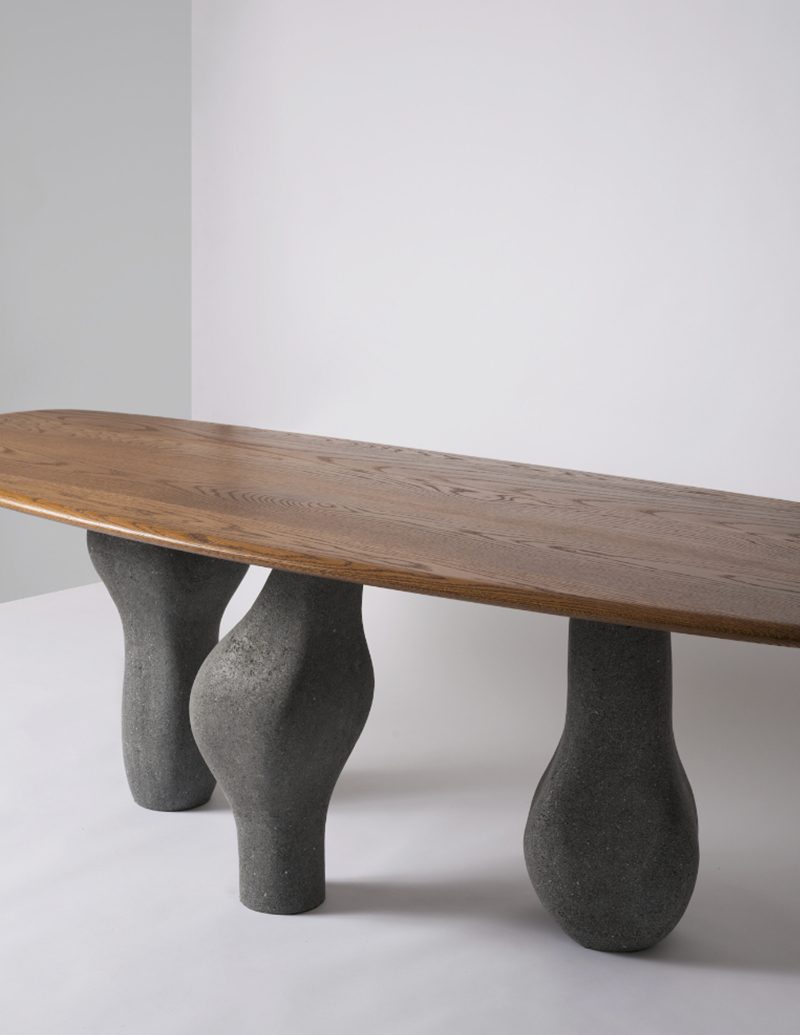
LATINNESS: We feel that your pieces are, in a way, research projects on pre-Columbian materials, shapes and processes. Where do you get inspiration? How do you choose the materials, define the designs and decide on the communities with whom you work?
ESTEFANIA: I think everything connects. As I mentioned, in 2016 we met the artisans with whom we work now. At the beginning, the first challenge was to imagine how we could adapt the techniques. We were not looking for the objects themselves or the symbolism, only the actual doing.
We began to identify pieces that originate from Guatemala or Latin America, such as the piedra de moler (grinding stone). We use the three legs and the volcanic stone to design the Altar Table. We wanted to follow the same line of this utilitarian object. How to do it? How do you create a table using volcanic stone? So we work with Marcelino at the lake. The shape was inspired by that and the idea of having a table that you can perform a ritual on.
We also use textiles to make rugs and we spent a year seeing how they could be made.
This is possible thanks to a constant dialogue with the craftsman, with Gustavo, and with the references we have, and fortunately we have many, especially in our family, including my mother and my husband’s mother. We always talk about history with them. My mom lived for a long time where all the Mayan pyramids are, and it’s something that’s always been present in my life.
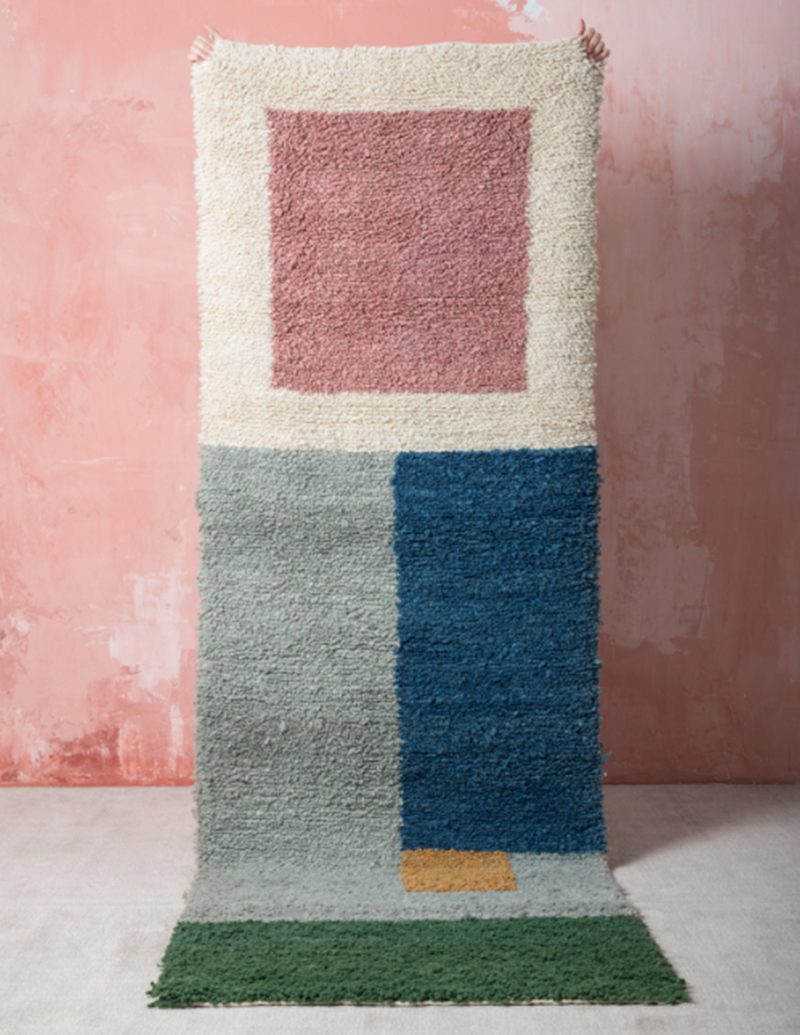
A closer look at the Apolonio Rug series.
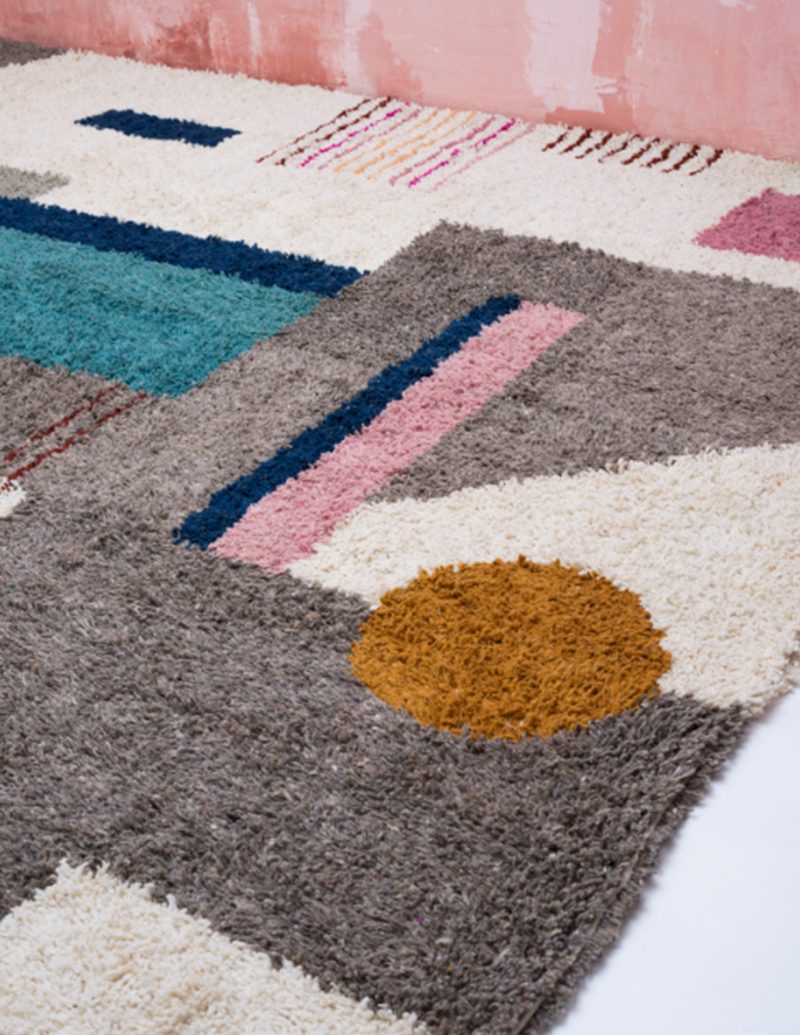
LATINNESS: What material have you not dared to use, but would like to explore?
ESTEFANIA: It’s a good question, I don’t know. Now that I’ve been in my Master’s degree, I’ve learned to use glass and ceramics. Currently, I’m working with bronze.
Maybe I’m more of a nature person. I like natural materials most; I love how they look. Maybe palm or coconut fiber. They do it in a region of Guatemala, and I would love to explore the possibility.
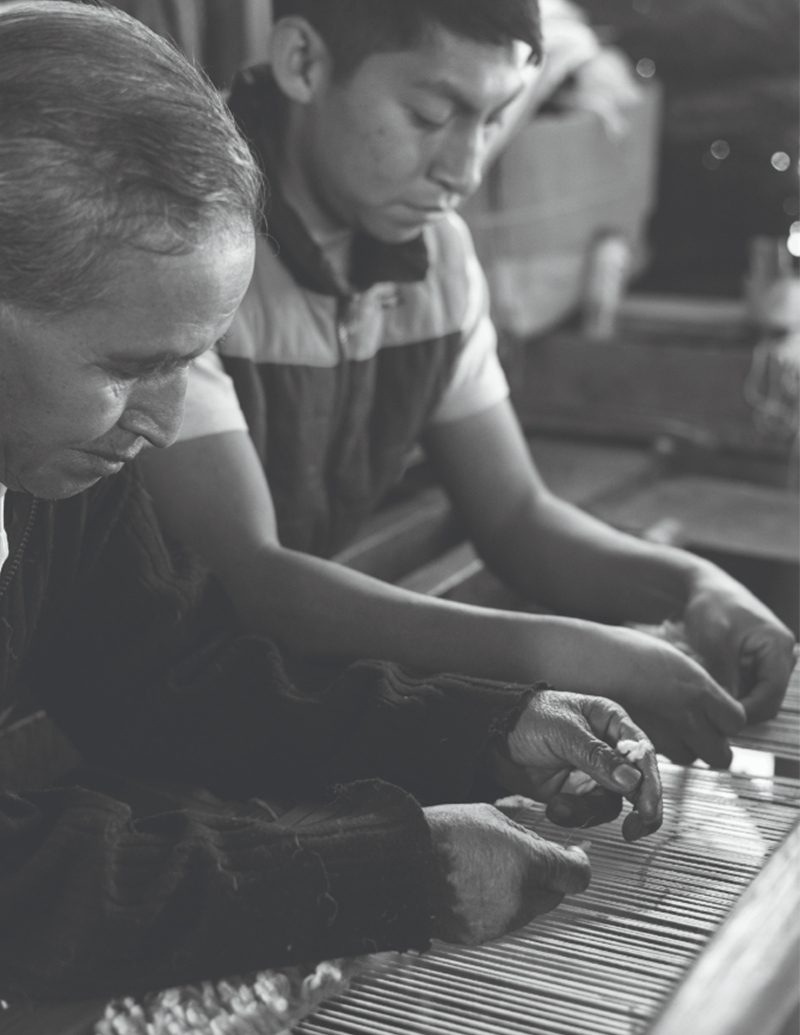
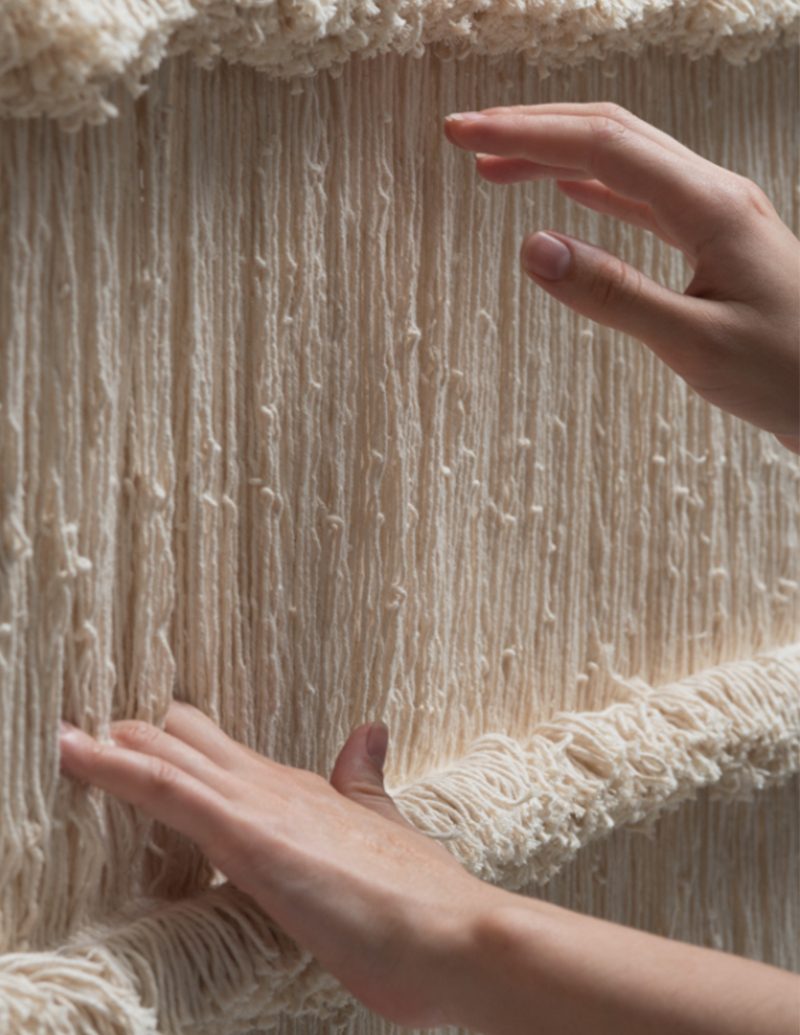
LATINNESS: Are there currently people who work with coconut fiber?
ESTEFANIA: A friend told me that he had met these people in Livingston, en Guatemala. They live in Lake Izabal and work there, but I haven’t been there.
LATINNESS: What role does sustainability play in the techniques you use?
ESTEFANIA: Sustainability is a very important thing. I think any designer should ask themselves about it, because we bring things into the world and it’s essential to understand what, who and how they are created, and what we are using, where that material is going to end up and what it’s going to do, right?
So I try to keep this aspect in mind when designing. The process of making textile from wool is very beautiful. The environment is respected throughout the process because they grab the sheep and remove its hair without hurting it. Then, it’s washed, loaded and the goats are taken out. Then it’s woven into the net standing up. All of this is sustainable.

A scene captured by Estefania during a visit to Momostenango, Guatemala.
LATINNESS: Is there a material you think might be a sustainable future option for design?
ESTEFANIA: I find it difficult. I wish we could focus on natural materials. I’m anti plastic; I feel that, even if you recycle it, you’re not cutting out the root of the problem. Today there’s a lot of information and ways to make products in a sustainable way.
For example, a friend of mine from Guatemala has an initiative called the New Denim Project. They make textile from previously used textile. It’s a circular system. That’s what I want: to start thinking about the future as that circular product.
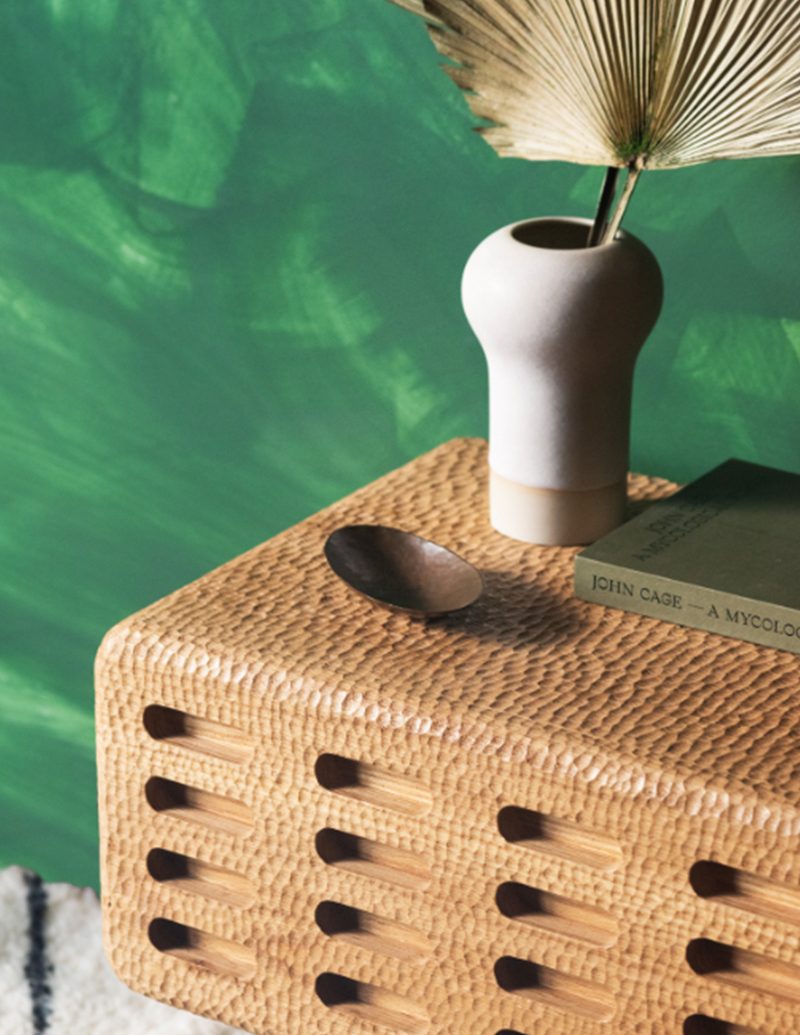
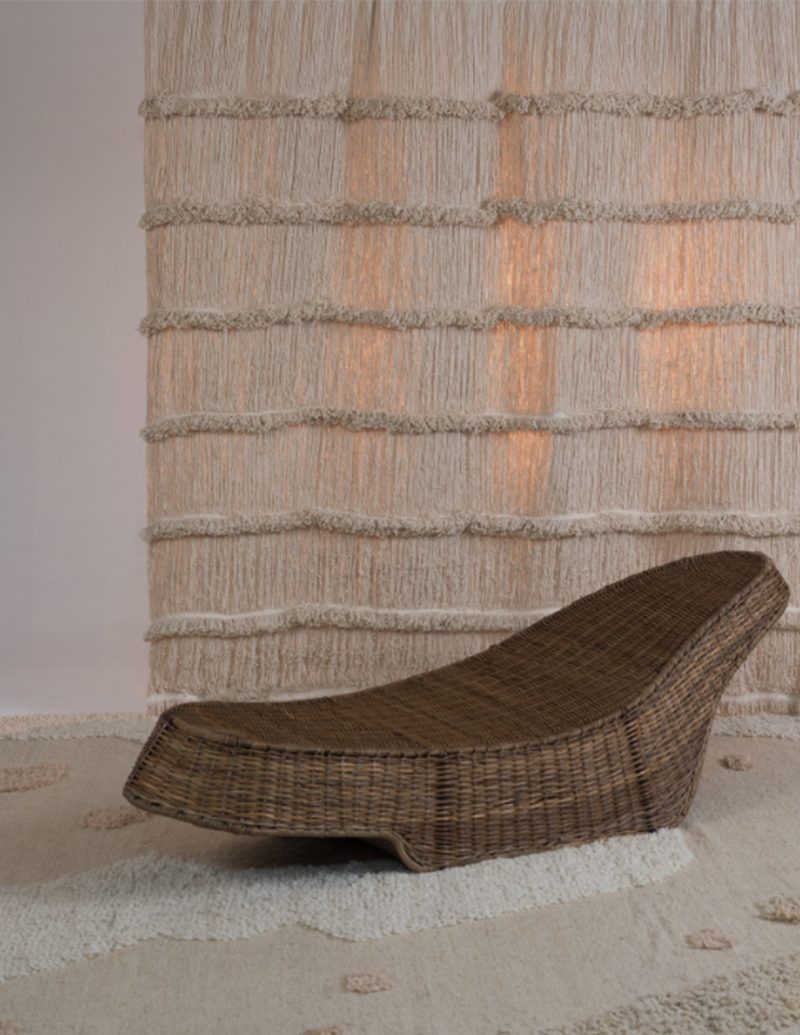
The Cayuco Chaise Lounge and Loose Thread Curtain.
LATINNESS: In the past we’ve interviewed designers like yourself, who’ve witnessed a real impact on the local economy or society by working with artisans, employing techniques that were almost extinct or creating a local industry. Would you say it’s been the case with Agnes Studio in Guatemala?
ESTEFANIA: Yes, I really think we’ve supported the artisans. Those who worked in 2016 were no longer weaving. Bayron, who is the leader of the community, took out his parents’ looms and started making wool rugs again; they organized themselves.
And yes, I feel that we’ve been a big support for them because today they not only work with us, but also with other designers. Bayron told us that since we started this collaboration and making the pieces, many people saw that it could be done, especially in the case of wool fabric. This made other people start to want that too and to be interested in what Guatemala has to offer.
And, well, Marcelino is an incredible sculptor, just like Carlos, with whom we work with wood. We are very good friends.
We’ve put in our grain of sand, but I’d still like to do more. I’d like to work with more female artisans who are dedicated to textiles. I’m looking at a couple of samples to evaluate that option.

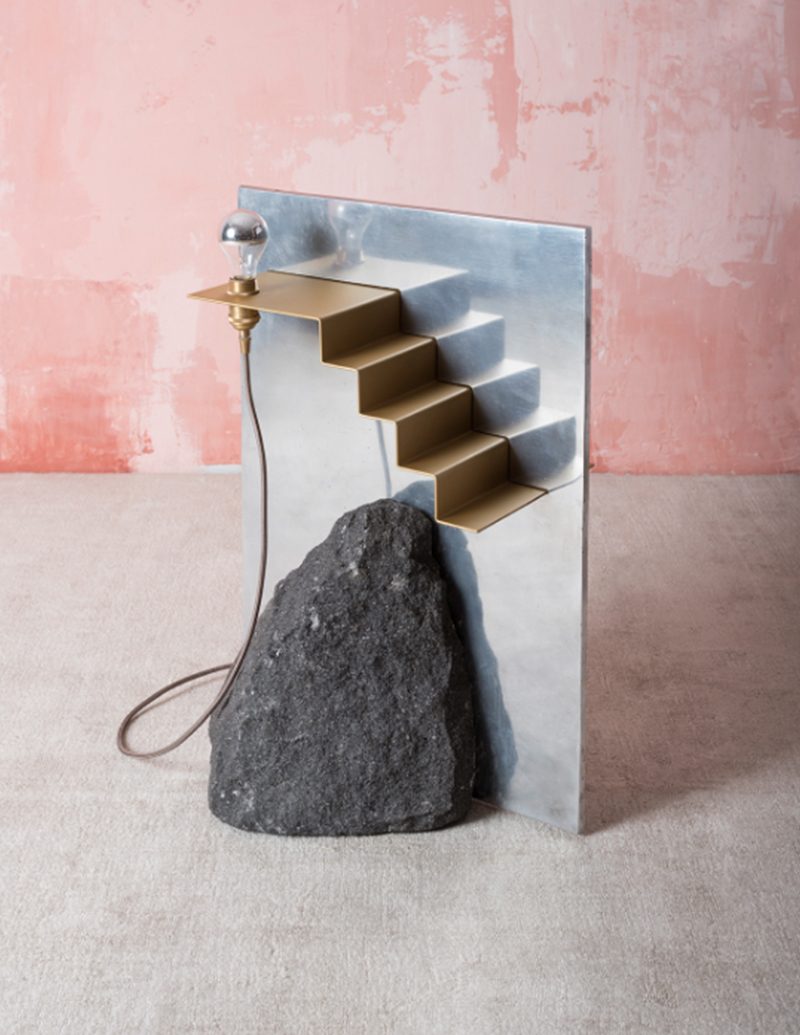
The Piramide Lamp.
LATINNESS: What are you working on now?
ESTEFANIA: We are working on the second collection, which will be a little different, but with a common thread. We currently collaborate with a community in Playa Grande through an association from the United States that aims to empower women with their businesses.
I’m also finishing my pottery workshop to start making utilitarian pieces and maybe a bit of sculpture.
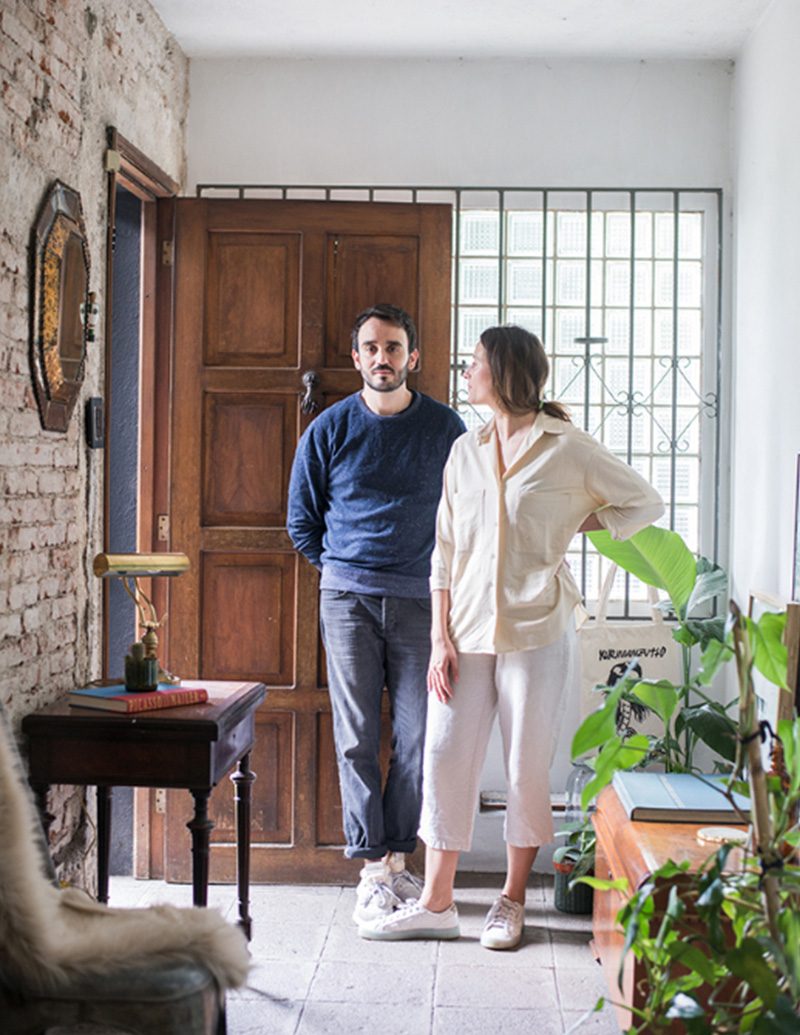

The Obsidiana Chair in the Agnes Studio workshop.
LATINNES: Do you have a showroom in Guatemala or is it a workshop behind closed doors?
ESTEFANIA: Yes, closed doors because I came back from my Master’s degree in Rhode Island about four months ago.
We just returned and no longer have the house we used to live in, where the studio and showroom were. Now we’re searching for a new space, but haven’t found anything that fits what we really want.
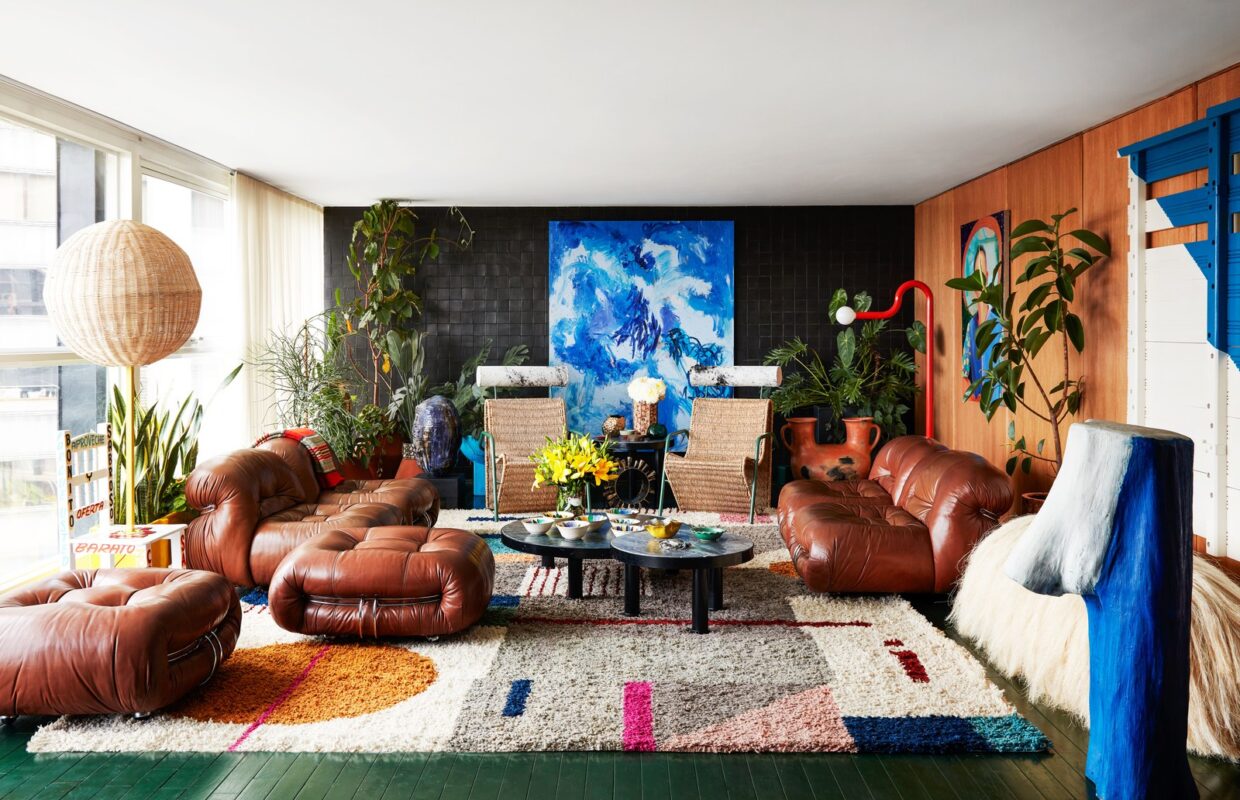
Apolonia Rug in Rodman Primack and Rudy Weissenberger’s Mexico City home.
LATINNESS: Any Latin or non-Latin female creators that have influenced your career?
ESTEFANIA: There have been quite a few: Lina Bo Bardi; her work in Brazil is amazing. She was not Latin, but Italian. Also, Clara Porset, who was Cuban, and did many things in Mexico. She reinterpreted furniture as something more contemporary.
My aunt has also been a great influence on me. I remember she had a lava stone sink in her house, which I always loved, and she told us its story: that she had gone to the volcano to buy the stone, and she took it with and they carved it for her.
She and my mom were always very creative, and seeing everything they did was a big influence on me. My other aunt also designed carved wooden furniture and had a shop in Antigua that I remember very well.
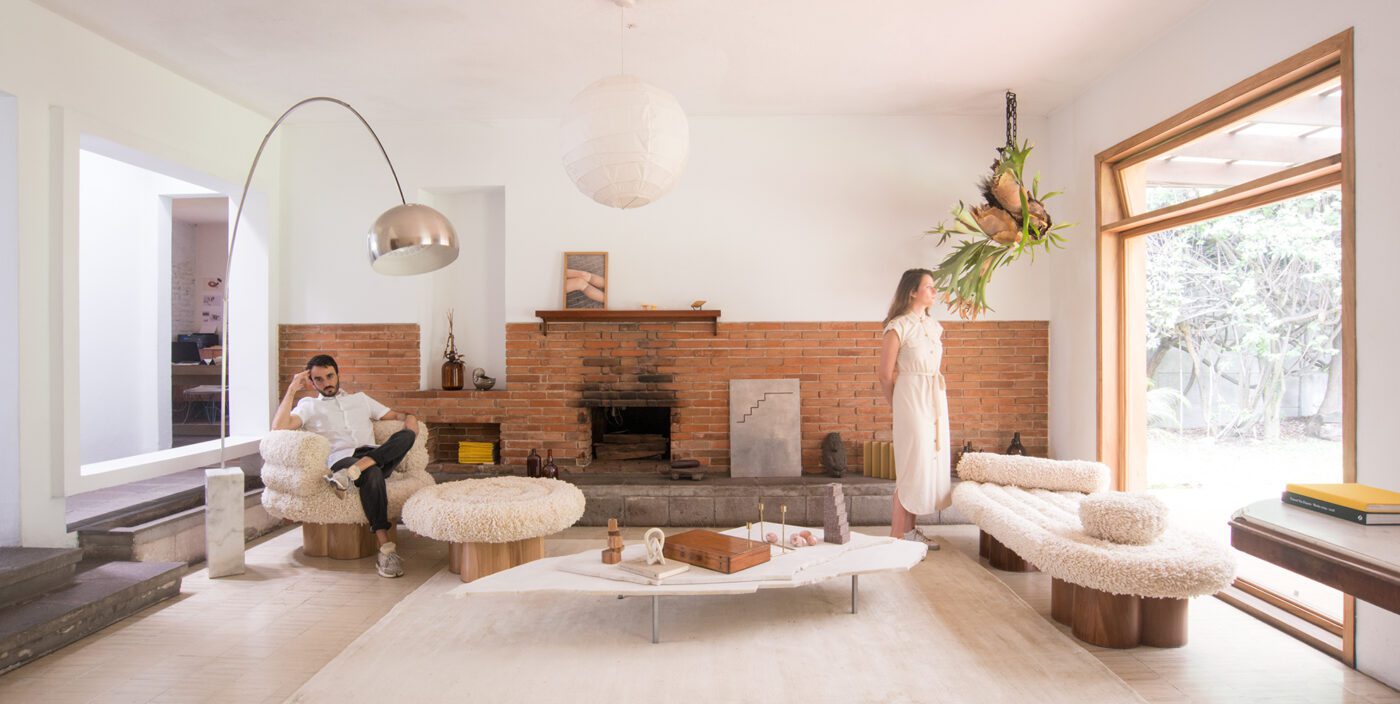
Gustavo and Estefania amongst the Lana series in their home in Guatemala City.
LATINNESS: Any dreams you’ve yet to fulfill?
ESTEFANIA: To design and my own house and garden- a garden where I can grow my own food. Also, to travel.
Images courtesy of Estefania de Ros.

